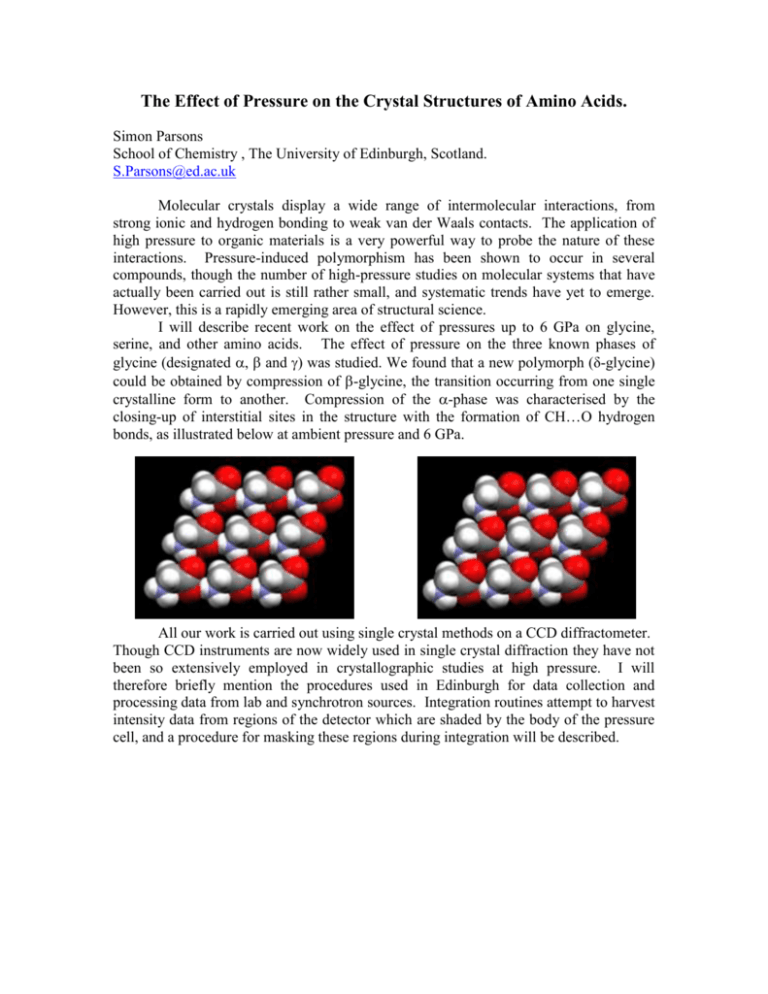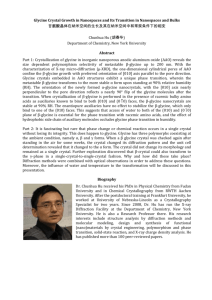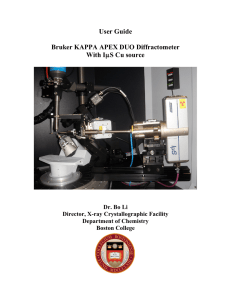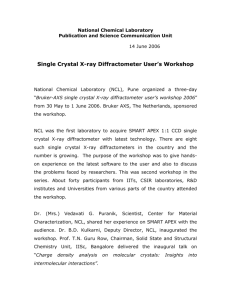The Effect of Pressure on the Crystal Structures of Amino Acids
advertisement

The Effect of Pressure on the Crystal Structures of Amino Acids. Simon Parsons School of Chemistry , The University of Edinburgh, Scotland. S.Parsons@ed.ac.uk Molecular crystals display a wide range of intermolecular interactions, from strong ionic and hydrogen bonding to weak van der Waals contacts. The application of high pressure to organic materials is a very powerful way to probe the nature of these interactions. Pressure-induced polymorphism has been shown to occur in several compounds, though the number of high-pressure studies on molecular systems that have actually been carried out is still rather small, and systematic trends have yet to emerge. However, this is a rapidly emerging area of structural science. I will describe recent work on the effect of pressures up to 6 GPa on glycine, serine, and other amino acids. The effect of pressure on the three known phases of glycine (designated , and ) was studied. We found that a new polymorph (δ-glycine) could be obtained by compression of -glycine, the transition occurring from one single crystalline form to another. Compression of the -phase was characterised by the closing-up of interstitial sites in the structure with the formation of CH…O hydrogen bonds, as illustrated below at ambient pressure and 6 GPa. All our work is carried out using single crystal methods on a CCD diffractometer. Though CCD instruments are now widely used in single crystal diffraction they have not been so extensively employed in crystallographic studies at high pressure. I will therefore briefly mention the procedures used in Edinburgh for data collection and processing data from lab and synchrotron sources. Integration routines attempt to harvest intensity data from regions of the detector which are shaded by the body of the pressure cell, and a procedure for masking these regions during integration will be described.











